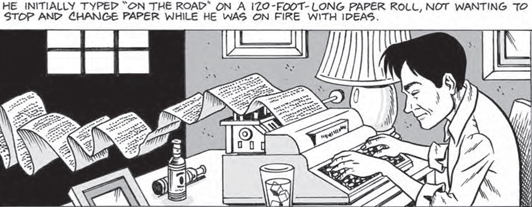For me, the writers I think of as "Beats" included Jack Kerouac, Allen Ginsberg, William S. Burroughs, and a few others I paid less attention to. Gary Snyder, sort of, since Kerouac did base a character in The Subterraneans on him. But I don't like labels much, and neither do most of the writers. Critics, on the other hand, love to categorize artists and writers into this slot or that literary movement. This graphic narrative (NOT novel) views the beat writers alongside those of the "San Francisco Poetry Renaissance." There was certainly some overlap, some mutual influence. It's a very readable look at a bunch of mid- to late- twentieth century American writers. Beyond the four I mentioned, there are also profiles of Lawrence Ferlinghetti, Charles Olson, Michael McClure, Philip Lamantia, Kenneth Patchen, Kenneth Rexroth, Robert Duncan, Philip Whalen, and several more good writers. The profiles tell a little about their lives and their writings.
Politically & culturally, Patchen was a rebel. Though variously identified as a communist, anarchist, Trotskyist, beat, surrealist, or dadaist, he rejected all labels... Above all, he hated war. "Any man with a gun aimed at another man is Hitler."
Many of those labels could be applied to a lot of writers. The labels may help us appreciate their work, but I'm reminded of Duke Ellington, who didn't always like the category "jazz." He composed music. Period.
Several artists drew these comix, and several people wrote the profiles, making The Beats: A Graphic History a lot of fun!



No comments :
Post a Comment
Note: Only a member of this blog may post a comment.